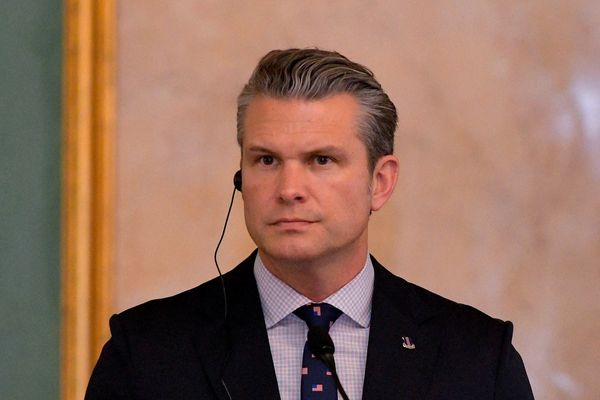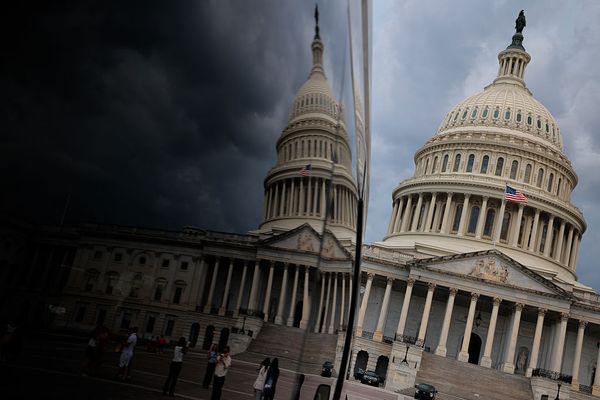
It was touted as a historic move that would change lives: in October 2024, Canada passed new legislation making all birth control free.
Justin Trudeau, then prime minister, called the bill’s passing “real progress”. The leftwing New Democratic party took credit, saying they had convinced Trudeau’s governing Liberals to move ahead with it. The bill didn’t just cover birth control: it made diabetes medication free, too, and ushered in a legal framework to possibly cover all prescription medication in the future: a national pharmacare plan.
“We dreamed of making sure our healthcare system included medication coverage. And now, pharmacare is the law of the land,” said Jagmeet Singh, then the leader of the NDP, to reporters.
The bill seemed to underline just how progressive Canada had become, coming into force just weeks before Donald Trump was re-elected, and two years after the US supreme court eliminated any constitutional right to abortion.
Nearly a year later, however, the promise has not come to pass. Birth control is still not free across Canada. Only three of the 10 provinces and one territory have deals in place – and the largest of them, British Columbia and Manitoba, already had free birth control. Trudeau and Singh are no longer in government, and new prime minister Mark Carney barely mentions reproductive rights, focusing instead on Trump, tariffs and Canada’s economic survival.
Many observers have been left wondering what happened after the lofty rhetoric. “It is perplexing that we haven’t had more immediate and enthusiastic uptake of the pharmacare plan,” said Angel Foster, a health sciences professor at the University of Ottawa who specializes in women’s health. “People have been demanding [free contraception] for a long time.”
Lacking gubernatorial power
The Pharmacare Act , which earmarked $1.5bn over five years for its first phase was the result of negotiations between the Liberals and the NDP, which had made pharmacare a key demand in 2022 to continue propping up the minority government.
And though he sounded a triumphal note in last October’s press conference, Singh also hinted at possible impediments.
Under Canada’s constitution, the 10 provinces and three territories have authority over delivering healthcare. To secure federal money, they must each negotiate deals with the federal government.
Singh urged the government to strike while the iron was hot and quickly sign deals with the provinces, who might not be fiscally or ideologically inclined to do so.
“I’m worried, because we know that Conservative premiers do not want to see access to free birth control,” Singh said. “This pharmacare we’ve achieved is something that could be so amazing, but it’s very fragile.”
He added: “My message to Justin Trudeau is you can’t delay or drag your feet.”
But most provinces and territories have still not signed anything. Those who study health policy in Canada say the situation reflects federal government’s fundamental lack of power over the country’s healthcare.
One problem they point to is a rooted antipathy towards the entire idea of universal pharmacare, which Canadian politicians have long feared could incur runaway costs, said Katherine Boothe, an associate professor at McMaster University in Ontario who specializes in health policy and public pharmaceutical programming.
“It’s a very strange thing, but it shows up early in Canada,” she said of the persisting fear that pharmacare costs would balloon over time. “And I think the fact that it shows up so early and so consistently is what gives it so much power today.”
Advocates counter that birth control saves money by leading to fewer abortions, which the government must finance. According to research published in the Journal of Obstetrics and Gynaecology Canada in 2015, the most recent data available, the cost of unplanned pregnancies in Canada is about $320m annually.
The UK, France and Australia, which have universal healthcare, all include some form of pharmacare. Residents of the UK pay £9.90 per prescription, but some items are always free, including contraception and medicines for hospital inpatients. The French system features universal coverage with some small co-payments, and exemptions for children and people on low incomes or with a serious chronic illness. Australia, meanwhile, has its Pharmaceutical Benefits Scheme, in which the government subsidizes most medications and residents pay a maximum of AU$31.60 per prescription.
Canada is a clear outlier. Canadians pay the second highest costs for prescriptions in the industrialized world, behind only the US. People must pay for prescription drugs themselves, unless they have coverage through their employer, private insurance, or a patchwork series of provincial or territorial drug funding programs that can be predicated on income, age or both.
The lack of consistency means about one in five Canadians pay out of pocket for medications, which amounts to about $30bn for 600m prescriptions, according to 2016 figures published in the Lancet. As for birth control, oral contraception will cost someone about $300 per year, while IUDs, which are effective for five years, are about $500.
With the country in the grip of a cost of living crisis, people lacking contraception coverage may forgo it to pay for housing or groceries, say sexual health advocates. Several studies in Canada indicate that cost is the most significant barrier to contraceptive use, especially in low-income households. Debbie Owusu-Akyeeah, the director of policy and advocacy at the Action Canada for Sexual Health and Rights, an Ottawa-based advocacy organization, said some women are choosing the cheapest contraception option, rather than the kind that works best for them.
“That’s where people are at: ‘I can’t afford this pill, but maybe I’ll just get condoms … at least I can make my bills’,” she said.
Fears Carney is abandoning pharmacare
Why haven’t more provinces jumped at the chance for what is effectively free money?
The ones that have say reproductive justice and saving money were their main reasons for getting on board. British Columbia will use $670m of national pharmacare funding to bolster its existing contraception coverage, which the University of British Columbia has estimated saves $27m per year over paying for abortions.
Manitoba is taking more than $226m over four years, while PEI signed up in March and began its free contraception program in May, taking $30m over four years. The Yukon will receive $9.5m after signing in March, with coverage to start in January 2026.
“It’s great for our economy and it’s great for communities overall. This for us, was a common sense healthcare decision to make,” said Uzoma Asagwara, Manitoba’s deputy premier and minister of health.
But there are concerns that Carney’s Liberals may be backing away from pharmacare. In April the Liberal party reiterated its commitment to universal healthcare and protecting pharmacare, but did not mention more details on specific drug coverage.
In a statement, the federal government said it is “committed” to working with all provinces and territories, but did not answer specific questions on when it plans to lock in deals.
Some provinces expressed hesitancy, blaming the federal government for stalling talks as Carney spends his first few months in government talking trade and tariffs.
“Rushing into any deal rarely results in a good agreement. Our federal partners know we are interested in continuing discussions. We are waiting for them to begin negotiations,” said a spokesperson for Nova Scotia’s department of health and wellness.
Adriana LaGrange, Alberta’s minister of primary and preventative health services, said in a statement that the province has “made it clear” it would like its share of federal funding to enhance coverage – but it has not received a response from Ottawa.
She also expressed sustainability concerns over the cost of the national pharmacare program, noting that Ottawa had already committed more than $900m of its original $1.5bn budget to just three provinces.
Ontario did not respond to questions, and its premier, the Conservative party’s Doug Ford, has not been definitive on whether he supports pharmacare.
Jennifer Stevens, an NDP member of provincial parliament in Ontario who supports pharmacare, scoffed at those in her government who claim their current programs – covering contraception for people under 25 and over 65 – are adequate, given most women’s reproductive years in Canada include their late 20s and 30s.
“This is about logic, fairness and public good. So we need to get this Conservative government to the table,” she said.
Owusu-Akyeeah said urgent healthcare needs of the country cannot be put on hold while focusing on Trump or any other geopolitical issue.
“We cannot lose sight of what continues to remain a core principle of Canadian identity, which is a universal healthcare system,” she said.
• This article was amended on 24 September 2025. Canada has three territories, not four as an earlier version said.







